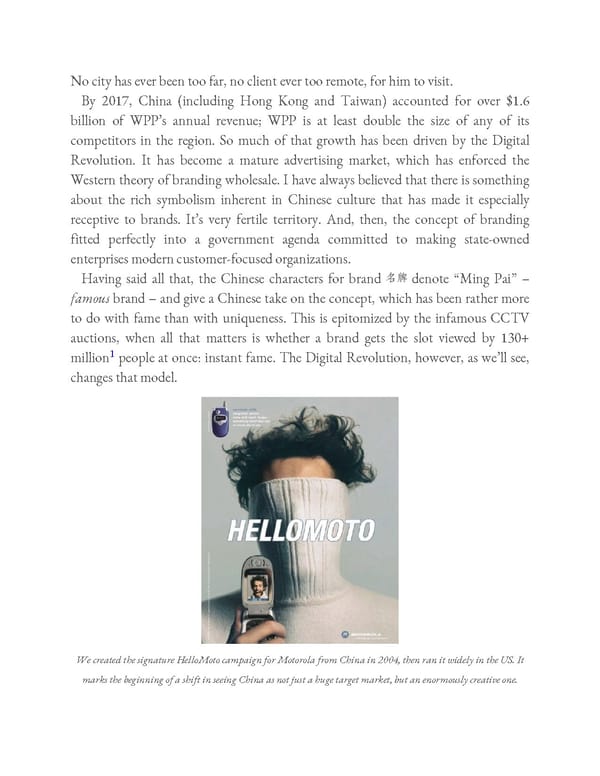No city has ever been too far, no client ever too remote, for him to visit. By 2017, China (including Hong Kong and Taiwan) accounted for over $1.6 billion of WPP’s annual revenue; WPP is at least double the size of any of its competitors in the region. So much of that growth has been driven by the Digital Revolution. It has become a mature advertising market, which has enforced the Western theory of branding wholesale. I have always believed that there is something about the rich symbolism inherent in Chinese culture that has made it especially receptive to brands. It’s very fertile territory. And, then, the concept of branding fitted perfectly into a government agenda committed to making state-owned enterprises modern customer-focused organizations. Having said all that, the Chinese characters for brand denote “Ming Pai” – famous brand – and give a Chinese take on the concept, which has been rather more to do with fame than with uniqueness. This is epitomized by the infamous CCTV auctions, when all that matters is whether a brand gets the slot viewed by 130+ 1 million people at once: instant fame. The Digital Revolution, however, as we’ll see, changes that model. We created the signature HelloMoto campaign for Motorola from China in 2004, then ran it widely in the US. It marks the beginning of a shift in seeing China as not just a huge target market, but an enormously creative one.
 Ogilvy on Advertising in the Digital Age Page 430 Page 432
Ogilvy on Advertising in the Digital Age Page 430 Page 432